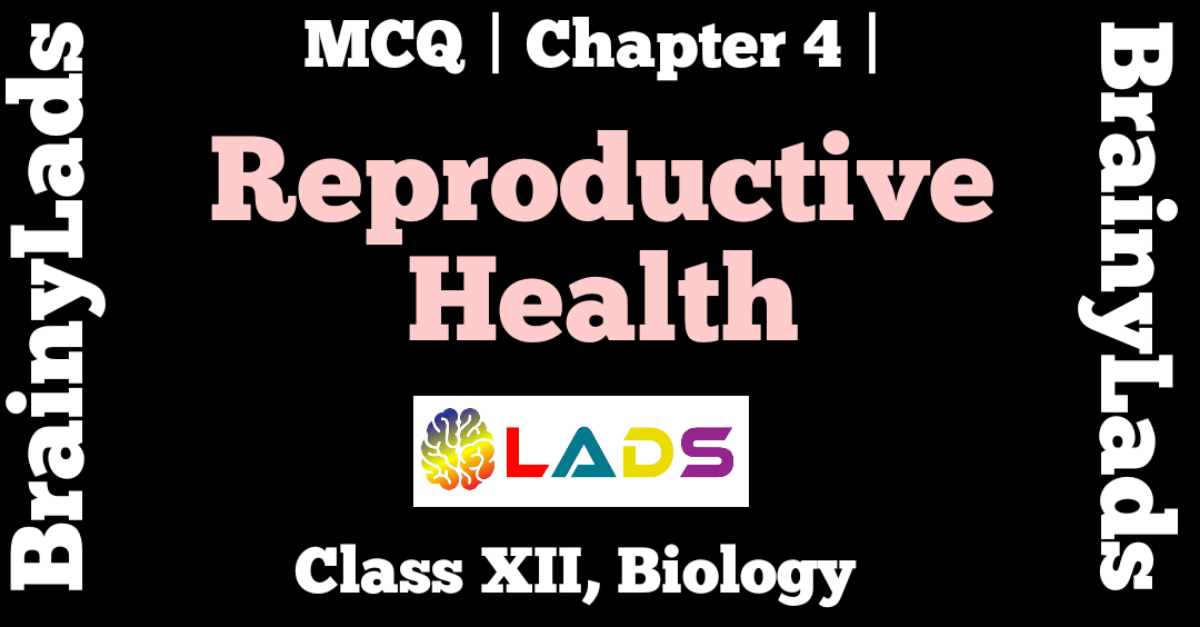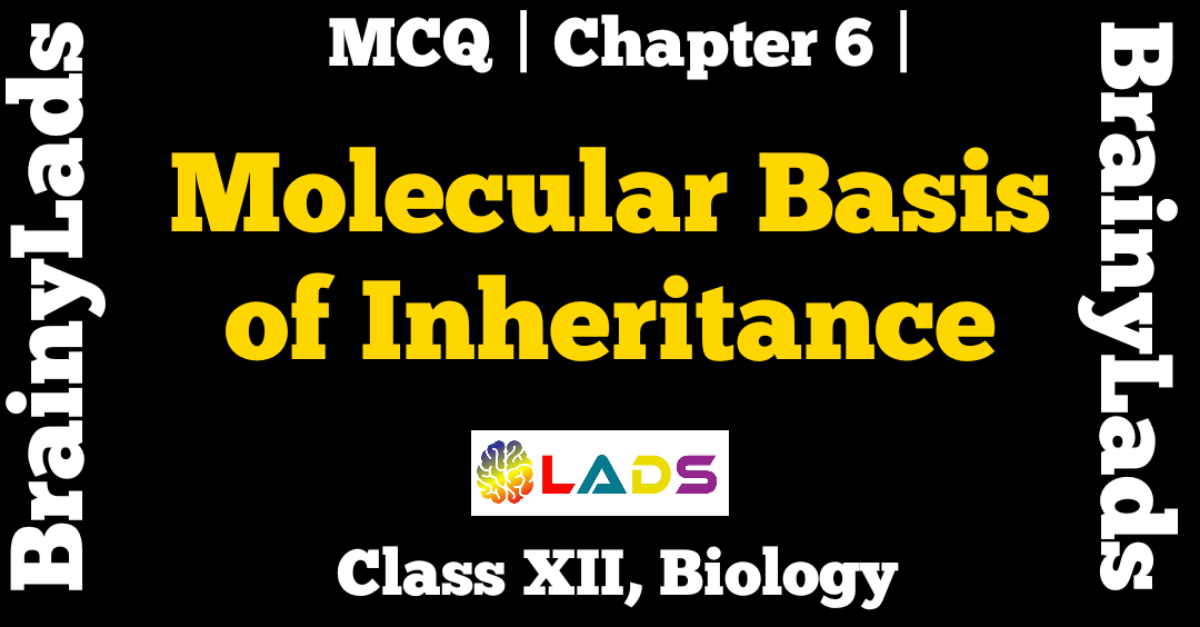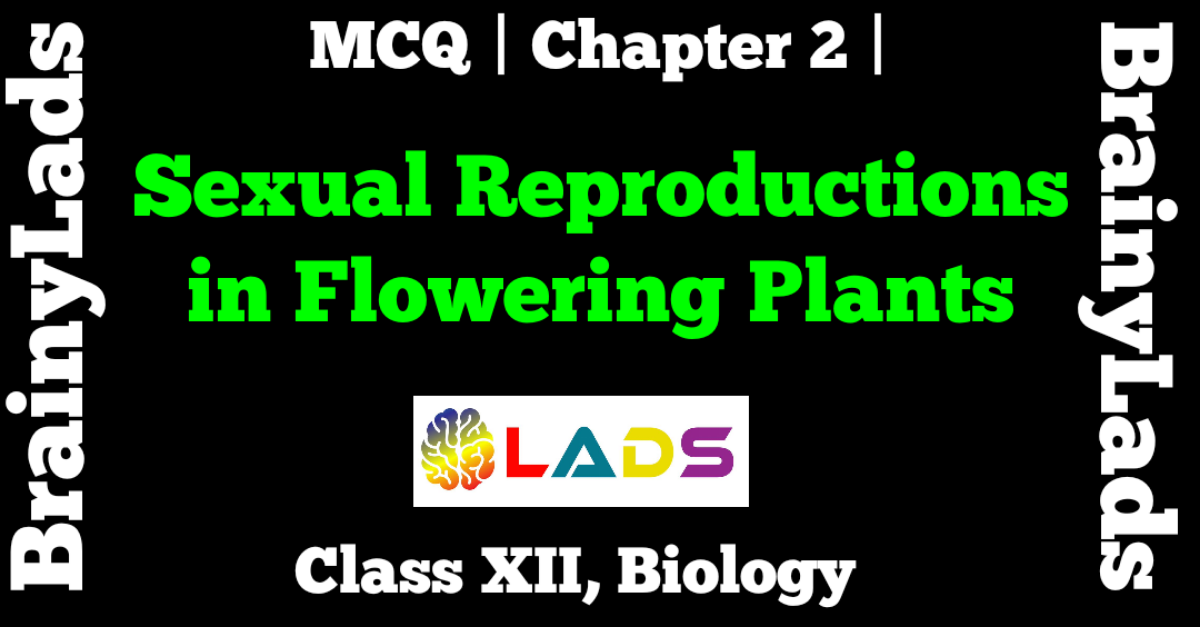MCQ Of Human Reproduction | Chapter 3 | Biology | Class 12 |
MCQ Of Human Reproduction, Chapter 3, Biology
Question 1: Which of the following is a secondary sex organ ?
- Beard
- Uterus
- Ovary
- Broad hips
Answer : B (Uterus)
Question 2: Secondary sexual characters in females are due to :
- Estrogens
- Androgens
- Progesterone
- Cholecystokinin
Answer : A (Estrogens)
Question 3: Scrotal sacs are connected with abdominal cavity by
- Vaginal cavity
- Inguinal canal
- Spermatic canal
- Haversian canal
Answer : B (Inguinal canal)
Question 4: The testis in humans are situated outside the abdominal cavity inside a pouch called scrotum the purpose served is for
- Acceleration of maturation of sperms
- Providing more space for the growth of epididymis
- Escaping any possible compression by the visceral organs
- Maintaining the scrotal temperature lower than the internal body temperature
Answer : D (Maintaining the scrotal temperature lower than the internal body temperature)
Question 5: In most mammals, the testes are located in scrotal sac for
- Spermatogenesis
- Sex differentiation
- More space to visceral organs
- Independent functioning of kidney
Answer : A (Spermatogenesis)
Question 6: In mammals failure of testes to descend into the scrotum is known as
- Castration
- Impotency
- Paedogenesis
- Cryptorchidism
Answer : D (Cryptorchidism)
Question 7: The tunica albuginea is a covering around the
- Testis
- Ovaries
- Scrotal sacs
- Epididymis
Answer : A (Testis)
Question 8: Sperms are produced in
- Vas deferens
- Prostate gland
- Interstitial cells
- Seminiferous tubules
Answer : D (Seminiferous tubules)
Question 9: Which of the following is found in the interstitial connective tissue of testis ?
- Sertoli cells
- Sustencular cells
- Leydig cells
- Chromaffin cells
Answer : C (Leydig cells)
Question 10: Location of leydig cells and their secretions are
- Ovary–Estrogen
- Liver–Cholestrol
- Testis–Testosterone
- Pancreas–Glucagon
Answer : C (Testis–Testosterone)
Question 11: In the vertebrate testis, for Nourishment during spermiogenesis the spermatids get attached to
- Sertoli cells
- Spermatocytes
- Interstitial cells
- Sperm – mother cells
Answer : A (Sertoli cells)
You may also read MCQ of Reproduction in Organisms, MCQ of Sexual Reproduction in Flowering Plants, MCQ of Reproductive Health, MCQ Of Principles of Inheritance and Variation, MCQ of Molecular Basis of Inheritance for better understanding of the chapters.
Question 12: Sertoli cells are found in testis, these cells are
- Nurse cells
- Reproductive cells
- Receptor cells
- None of these
Answer : A (Nurse cells)
Question 13: Which of the following controls the function of sertoli cells?
- FSH
- ACTH
- Estrogen
- Testosterone
Answer : A (FSH)
Question 14: Rete testis opens to
- Urethra
- Vasa efferentia
- Bidder’s canal
- Cauda epididymis
Answer : B (Vasa efferentia)
Question 15: If the vas differentia of a man are surgically cut or blocked:
- Semen will be without sperms
- Spermatogenesis will not take place
- Testosterone will disappear from blood
- Sperms in the semen become non motile
Answer : A (Semen will be without sperms)
Question 16: Which gland in mammal makes alkaline secretion for lubrication ?
- Testis
- Pineal body
- Prostate gland
- Cowper’s gland
Answer: D (Cowper’s gland)
Question 17: Seminal fluid contains the secretions of
- Follicles, uterus and prostate gland
- Prostate cowper’s and bartholin’s gland
- Seminal vesicle, uterus and prostate gland
- Seminal vesicle, prostate and Cowper’s gland
Answer : D (Seminal vesicle, prostate and Cowper’s gland)
Question 18: Seminal fluid has a pH of about
- 6.0
- 7.4
- 8.5
- 9.0
Answer : B (7.4)
Question 19: Which one is unpaired gland in male reproductive system ?
- Seminal vesicle
- Cowper’s gland
- Prostate gland
- Lacrimal gland
Answer : C (Prostate gland)
Question 20: Which of the following sugars in semen is a source of energy for the spermatozoa ?
- Sucrose
- Fructose
- Glucose
- Galactose
Answer : B (Fructose)
Question 21: At what speed human sperm moves in the female genital tract ?
- 3 mm/min
- 10 mm/min
- 15 mm/min
- 20 mm/min
Answer : A (3 mm/min)
Question 22: The blood vessels and nerves enter the ovary through
- Hilum
- Zona pellucida
- Antrum
- Graafian follicle
Answer : A (Hilum)
Question 23: Match the following :
A Inguinal canal 1 Network of seminiferous tubules
B Rete testis 2 Secondary sexual character
C Leydig cells 3 For descending of testis
D Prepuce 4 Dorsal bundles of muscles
E Corpora cavernosa 5 Terminal skin of penis
- A = 1, B = 2, C = 3, D = 5, E = 4
- A = 3, B = 1, C = 4, D = 2, E = 5
- A = 2, B = 4, C = 3, D = 5, E = 1
- A = 3, B = 1, C = 2, D = 5, E = 4
Answer : D (A = 3, B = 1, C = 2, D = 5, E = 4)
Question 24: Graafian follicle possess :
- Theca externa
- Granulosa
- Theca interna
- All of these
Answer : D (All of these)
Question 25: The growth and maturation of Graafian follicle is controlled by
- FSH-LH
- GH-ADH
- FSH-LTH
- LH-ACTH
Answer : A (FSH-LH)
Question 26: The release of mature ovum from Graafian follicle is known as
- Oogenesis
- Oviparity
- Ovulation
- Oviposition
Answer : C (Ovulation)
Question 27: Which is the correct sequence of layers in the mammalian egg from outside to inside ?
- Zona pellucida, Corona radiata, plasma membrane
- Corona radiata, zona pellucida, plasma membrane
- Plasma membrane, zona pellucida, Corona radiata
- None of the above
Answer : B (Corona radiata, zona pellucida, plasma membrane)
Question 28: When is progesterone secreted ?
- After ovulation
- After parturition
- Before ovulation
- At the time of parturition
Answer : A (After ovulation)
Question 29: An important function of progesterone is
1 Prepare uterus for pregnancy
2 Implantation of embryo
3 Maintenance of pregnancy
4 Stimulate ADH
Answer codes
- 1 and 2 are correct
- 2 and 4 are correct
- 1 and 3 are correct
- 1,2 and 3 are correct
Answer : D (1,2 and 3 are correct)
Question 30: Labia majora of a female mammal is homologous to
- Scrotal sac
- Epididymis
- Prostate gland
- Seminal vesicle
Answer : A (scrotal sac)
Question 31: If a germ cell in a female gonads and germ cell in the male gonad begin undergoing meiosis simultaneously what will be the ratio of ova and sperms produced?
- 1: 1
- 1 : 2
- 1 : 4
- 2 : 1
Answer : C ( 1 : 4 )
Question 32: Correct sequence of cell stages in spermatogenesis is:
- Spermatocytes, spermatids, spermatogonia, spermatozoa
- Spermatogonia, spermatocytes, spermatids, spermatozoa
- Spermatocytes, spermatogonia, spermatids, spermatozoa
- Spermatogonia, spermatids, spermatocytes, spermatozoa
Answer : B (spermatogonia , spermatocytes , spermatids , spermatozoa)
Question 33: Number of spermatozoa produced by a single primary spermatocyte during spermatogenesis is
- One
- Two
- Four
- Eight
Answer : C (Four)
Question 34: Conversion of spermatid to spermatozoa is called
- Cytokinesis
- Vitellogenesis
- Spermiogenesis
- Spermatogenesis
Answer : C (Spermiogenesis)
Question 35: The head of sperm consists of
- Nucleus
- Acrosome
- Mitochondria
- Acrosome and nucleus
Answer : D (Acrosome and nucleus)
Question 36: The acrosome plays important role in
- Penetration of ovum by sperm
- Providing energy to sperm
- Motility of sperm
- None of the above
Answer : A (Penetration of ovum by sperm)
Question 37: The lytic enzyme released by sperm is
- Ligase
- Acrosome
- Androgamone
- Hyaluronidase
Answer : D (Hyaluronidase)
Question 38: Middle piece of mammalian sperm contains
- Centrioles only
- Mitochondria only
- Nucleus and mitochondria
- Centrioles and mitochondria
Answer : D (Centrioles and mitochondria)
Question 39: A cross section at the midpoint of the middle piece of a human sperm will show
- Centriole and mitochondria
- 9 + 2 arrangement of microtubules only
- Mitochondria and 9 + 2 arrangement of microtubules
- Centriole , mitochondria and 9 + 2 arrangement of microtubules
Answer : C (Mitochondria and 9 + 2 arrangement of microtubules)
Question 40: Oogenesis comprises
- Maturation phase
- Growth phase
- Multiplication phase
- All of these
Answer : D (All of these)
Question 41: During oogenesis each diploid cell produces
- Four functional cells
- Four non functional polar bodies
- One functional egg and three polar bodies
- Two functional eggs and two polar bodies
Answer : C (One functional egg and three polar bodies)
Question 42 : First polar body is formed at which stage of oogenesis
- First meiosis
- Second mitosis
- First mitosis
- Differentiation
Answer : A (First meiosis)
Question 43: In which phase of cell division is oocyte arrested
- Interphase
- Prophase I
- Anaphase II
- Both Prophase I and II
Answer : B (Prophase I)
Question 44: During oogenesis in mammals , the second miotic division occurs
- Before ovulation
- After fertilization
- In the formation of the primary oocyte
- In the formation of the secondary oocyte
Answer : B (After fertilization)
Question 45: Which one of the following is haploid?
- Oogonia
- Primary oocyte
- Secondary oocyte
- Primary spermatocyte
Answer : C (Secondary oocyte)
Question 46: In the human female , menstruation can be deferred by the administration of
- LH only
- FSH only
- Combination of FSH and LH
- Combination of estrogen and progesterone
Answer : D (Combination of estrogen and progesterone)
Question 47: Which of the following hormones is active during proliferative phase of menstrual cycle ?
- Estrogen
- Progesterone
- Testosterone
- All of these
Answer : A (Estrogen)
Question 48: The phase of menstrual cycle in humans that lasts for 7 to 8 days is
- Luteal phase
- Mensuration
- Follicular phase
- Ovulatory phase
Answer : C (Follicular phase)
Question 49: Ovulation in females is under the control of
- LTH
- ADH and LH
- FSH and LH
- LTH and TSH
Answer : C (FSH and LH)
Question 50: Shortest phase in the menstruation cycle of women is:
- Menses
- Luteal phase
- Follicular phase
- Ovulatory phase
Answer : D ( Ovulatory phase)
Question 51: Which hormone level reaches peak during luteal phase of menstrual cycle ?
- Estrogen
- Progesterone
- Luteinizing hormone
- Follicle stimulating hormone
Answer : B ( Progesterone)
Question 52: Uterine endometrium , uterine glands and connective tissue are broken during menstrual phase. This is due to
- Lack of Estrogen
- Lack of progesterone
- Oversecretion of FSH
- Over production of progesterone
Answer : B (Lack of progesterone)
Question 53: in the absence of pregnancy , Corpus luteum
- Degenerates after sometime
- Is maintained by progesterone
- Becomes active , secrets FSH and LH
- Produces a lot of oxytocin and relaxin
Answer : A (Degenerates after some time)
Question 54: Which of the following events is correctly matched with the time period in a normal menstrual cycle ?
- Release of egg – 5th day
- Endometrium regenerates – 5 – 10 days
- Rise in progesterone level – 1 – 15 days
- Endometrium secrets nutrients for implantation – 11 – 18 days
Answer : B (Endometrium regenerates – 5 – 10 days)
Question 55: Cessation of menstrual cycle is termed as
- Menarche
- Menopause
- Impotency
- None of these
Answer : B (Menopause)
Question 56: Maturation of sperm before penetration of ovum is called
- Ovulation
- Spermatid
- Capacitation
- None of these
Answer : C (Capacitation)
Question 57: Fertilization of sperm and ovum takes place in
- Ampulla of oviduct
- Isthmus of oviduct
- Fimbriae of oviduct
- None of these
Answer : A (Ampulla of oviduct)
Question 58: The embryo at 16 – celled stage is known as
- Morula
- Gastrula
- Blastula
- Blastomere
Answer : A (Morula)
Question 59: Which germ layer develops first during embryonic development ?
- Ectoderm
- Mesoderm
- Endoderm
- Both B and C
Answer : C (Endoderm)
Question 60: A mammalian blastula is called
- Embryo
- Blastocyst
- Trophoderm
- Blastomere
Answer: B (Blastocyst)
Question 61: The attachment and development of embryo inside uterus is called
- Gestation
- Conception
- Impregnation
- Implantation
Answer : D (Implantation)
Question 62: First or free milk is called
- Rostrum
- Colostrum
- Cholesterol
- Babies milk
Answer : B (Colostrum)
Question 63: Signals from fully developed foetus and parturition ultimately lead to parturition which requires the release of
- Relaxin from placenta
- Estrogen from placenta
- Oxytocin from foetal pituitary
- Oxytocin from maternal pituitary
Answer : D (Oxytocin from maternal pituitary)
Question 64: In human cleavage divisions are
- Fast and synchronous
- Slow and synchronous
- Fast and asynchronous
- Slow and asynchronous
Answer : D (Slow and asynchronous)
Question 65: The main function of the fimbriae of the fallopian tube in females is to
- Help in development of ovary
- Help in the development of Corpus luteum
- Release to ovum from the Graafian follicle
- Help in the collection of the ovum after ovulation
Answer : D (Help in the collection of the ovum after ovulation)
Question 66: Which one of the following is initiated by secretion of trophoblast ?
- Cleavage
- Blastulation
- Gastrulation
- Implantation
Answer : D (Implantation)
Do share this post if you liked it. For more updates keep logging on BrainyLads


